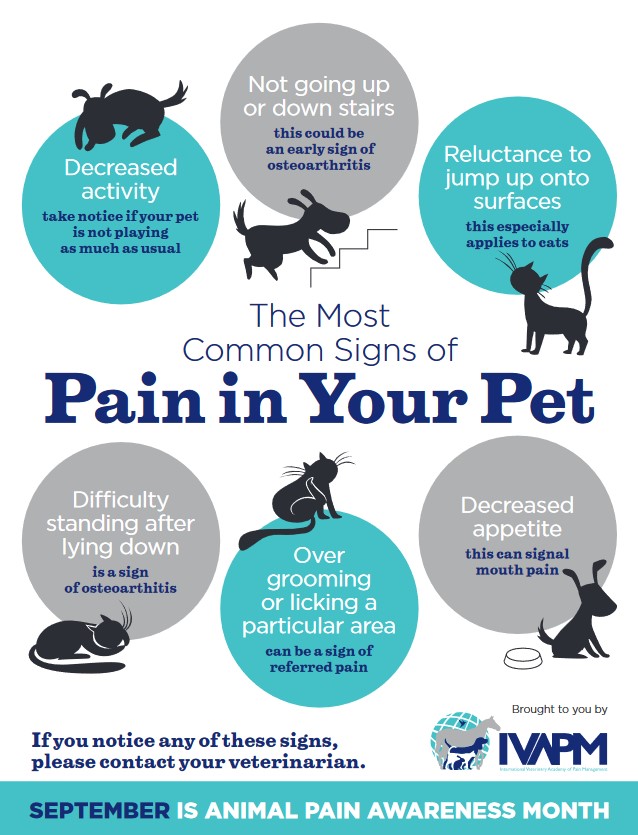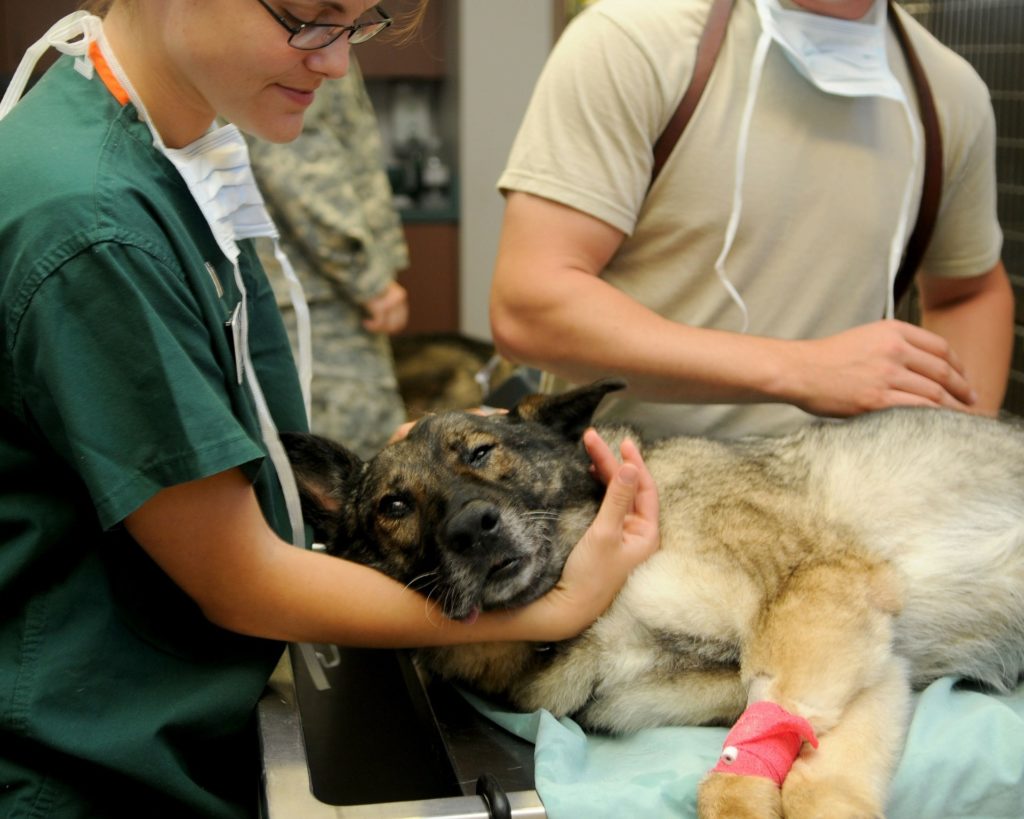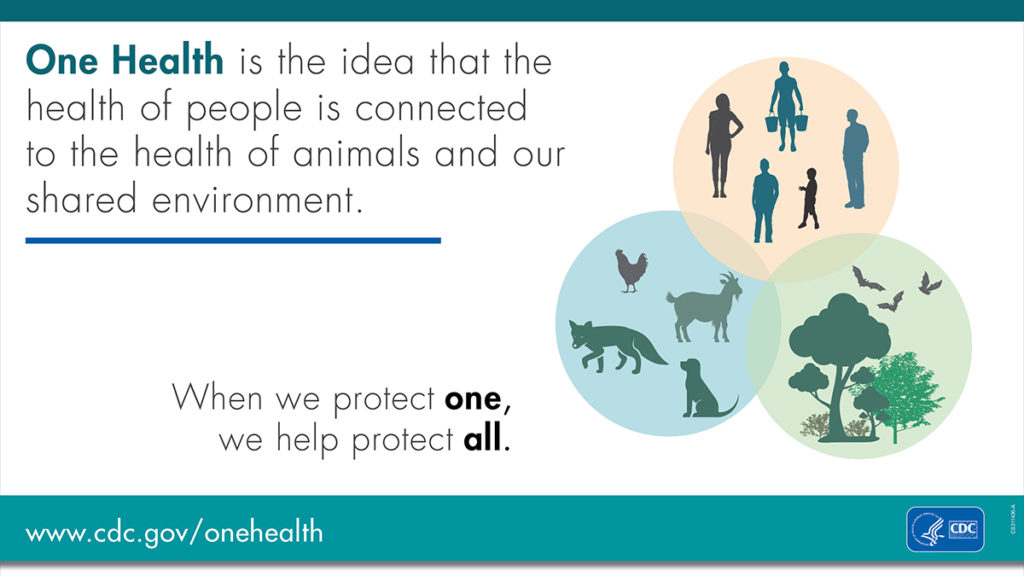Common Signs of Pain in Pets
For those who missed our last few blogs, September was declared Animal Pain Awareness Month by the International Veterinary Academy of Pain Management (IVAPM). Animal Pain Awareness Month was established to raise awareness and to help veterinary professionals and pet owners recognize and manage pain in animals.
Unfortunately, recognizing pain in our pets is not always easy. Some instances of acute pain are likely to be more obvious, such as pain from an injury or surgical procedure. However chronic pain tends to come on more slowly and thus, we may not recognize the signs for a while. An example of chronic pain is pain from osteoarthritis.
As part of their efforts to educate pet parents about recognizing pain in pets, the IVAPM has a list of the most common signs of pain. They are:
- Decreased activity – Take notice if your animal is not playing as much as usual
- Not going up or down stairs – This could be an early sign of osteoarthritis
- Reluctance to jump onto surfaces – This especially applies to cats
- Difficulty standing after laying down – This is a sign of osteoarthritis
- Decreased appetite – This can signal mouth pain
- Over grooming or licking a particular area – This can be a sign of referred pain
For a more comprehensive list of the common signs of pain in dogs and cats, visit the IVAPM website.
Additionally, they have put together checklists for dogs and cats that can be used to help determine if your pet is in pain.
While September is Animal Pain Awareness Month, it’s a good idea to keep an eye out for these potential signs of pain at all times. If you notice that your pet is exhibiting any of these signs, a trip to your vet may be in order.





